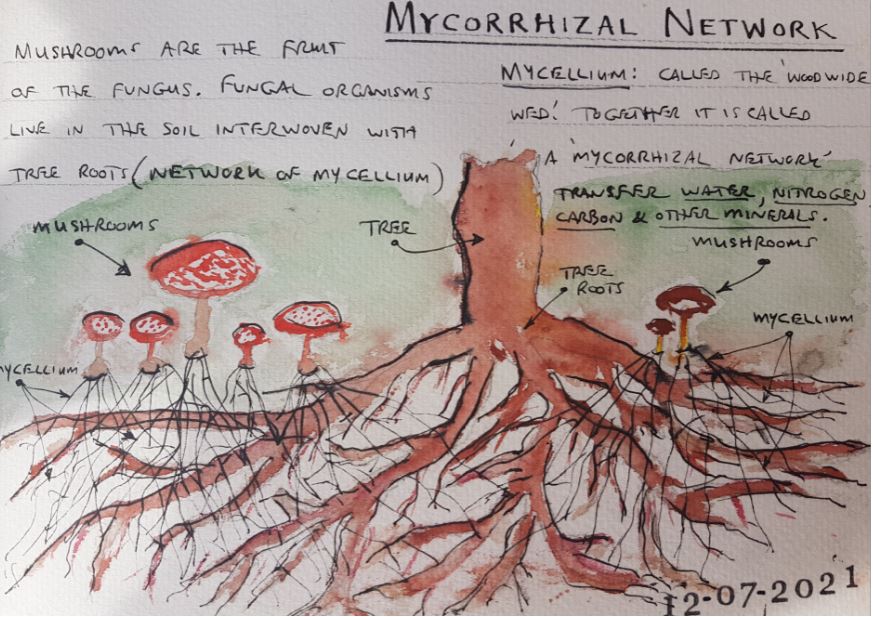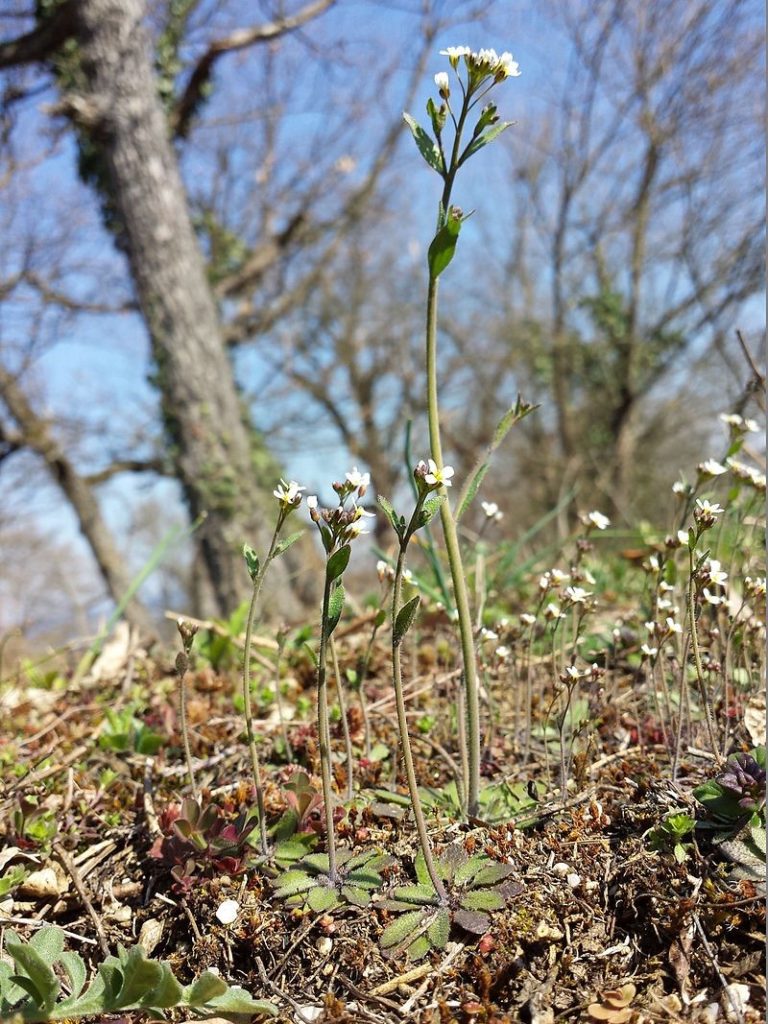
By William Van Zyl (July 2021)
Listen to the podcast of this article (listen while you read): https://www.podbean.com/ew/pb-gvr28-116868b
Hickory, Dickory, Tree – Dockerty, Hockerty, Dock.
A mouse
Hickory Dickory Tree. The mouse went up the tree.
The tree said no: “Not allowed.” The bark made it itch
The mouse immediately went down
Hickory Dickory Tree
Tick tock, tick tock, tick tock, tick tock
A snake
Hickory Dickory tree. The snake went up the tree
The tree said “yes,” The bark smelled nice, and the snake went up
Hickory Dickory Tree
Tick tock, tick tock, tick tock, tick tock
A squirrel
Hickory Dickory Tree. The squirrel went up the tree
The tree said yes. “Deposit your nut in my bark and leave.”
Soon the repulsive smell of the leaves made the squirrel leave
Hickory Dickory Tree
Tick tock, tick tock, tick tock, tick tock
A cat
Hickory Dickory Tree. The cat went up the tree
The tree said: “Be careful not to scratch me.” The bark became sticky
The cat went only halfway up and then — immediately — clambered down
Hickory Dickory Tree
Tick tock, tick tock, tick tock, tick tock
A monkey
Hickory Dickory Tree. The monkey went up the tree
The tree said: “Don’t break my branches.” The smell of the leaves revolted the monkey
The monkey went only halfway up and then came rushing down
Hickory Dickory Tree
Tick tock, tick tock, tick tock, tick tock
An elephant – oh no!
Hickorty dickorty tree. The elephant placed his huge trunk against the tree
The tree said: “Don’t push me over!” The tree had no time to respond
The elephant did not hear the tree’s voice – it was too late.
It pushed the forest tree, oh wee.
Dockerty, Hockorty, Crackerty, Bonk!
Tick tock, tick tock, in a matter of seconds, the tree flopped
A friend
Hickory Dickory Tree. The tree was lying on its side
The tree said to the neighbouring trees: “I need help.” The scent of the hurting tree went to the neighbours; its roots also sent electrical messages. Fungi relayed every word.
The hurting tree relaxed – it knew its neighbours had his back
Hickory Dickory Tree
Tick tock, tick tock, tick tock, tick tock – you won’t believe – the tree lived another 500 years.
From fun to research.
This fun rhyme – based on the well-known Hickory, Dickory, Dock – endeavours to get the reader’s attention to the animals and the tree talking. Playfully it wants to draw the reader in. But there is more, much more.
Could trees, plants and animals communicate? Could humans and trees communicate? We know that trees communicate with one another—above the ground and underground. These are some of the questions this article will touch on.
The unsuspected withering of a tree will also feature.
Science and Research: The Hidden Life of Trees
RESEARCH:
I want to tell you about the findings of plants and trees communicating, living life together – in communities – however, the forest scientist Peter Wohlleben does it perfectly. The story he shares of a ‘dead’ tree – found alive after about 500 years – is pivotal in his book.
Here is an image of a Kauri tree in New Zealand that refuses to die. Are other trees holding the ‘hands’ of this slain giant – nursing it for years?

Read more about the tump here: https://www.stuff.co.nz/auckland/114534612/this-kauri-treestump-has-stunned-the-science-world-because-it-refused-to-die

I include an excerpt from the Guardian to paint the background for this article.
Credit to Peter Wohlleben for the following extract from one of his books – The Heartbeat of Trees:
*Edited extract from The Heartbeat of Trees: Embracing Our Ancient Bond with Forests and Nature by Peter Wohlleben, translated by Jane Billinghurst, published by Greystone on 5 June. To support the Guardian order from guardianbookshop.com.
Rockcress (a plant) hearing clicking sounds
Unfortunately, a heartbeat every three to four hours is too slow for even the most sensitive person to feel when they hug a tree. But there is one last possible way to connect with trees: our voices. Can plants hear? I can answer without hesitation in the affirmative. This was tested years ago with Arabidopsis, a genus of the rockcress beloved by scientists. Beloved because it grows well, it reproduces rapidly, and it’s easy to keep track of its genes. Scientists discovered that the roots of Arabidopsis oriented themselves toward clicks in the frequency of 200Hz and then grew in that direction.
Rockcress (Arabidopsis) reacting to the tiny crunching sounds of Caterpillars.
Arabidopsis was originally adopted as a model organism because of its usefulness for genetic experiments. Important features included a short generation time, a small size that limited the requirement for growth facilities, and prolific seed production through self-pollination.
Source: https://onlinelibrary.wiley.com/doi/10.1111/j.1365-313X.2009.04086.x

(A) A. thaliana of the accession Columbia (Col) at different stages of its life cycle, from seed (bottom left) to seedling (11 days), to vegetative growth (39 days), and to reproductive growth (45 days). Photographs of (B) a flower, (C) a pollen grain (scanning electron micrograph), and (D) mature siliques (seed pods; left: closed; right: open with a few remaining unshattered seeds) at higher magnification. Image credits: B and C, Maria Bernal and Peter Huijser; other photographs, Ines Kubigsteltig and Klaus Hagemann. Link: https://elifesciences.org/articles/06100

Are you serious? The Arabidopsis plant can hear? Yes, I am. Listen to what Wohlleben has to report.
Arabidopsis also seems to react to the nibbling of caterpillars, an ominous sound to plants of all species. Researchers at the University of Missouri put caterpillars on samples of the plants. The vibrations caused by the caterpillars munching were enough to shake the plants’ stems, and the researchers used laser beams to record the vibrations. When researchers then played these vibrations to plants that were not being eaten, they produced substantial quantities of defensive chemicals when they were later attacked. Wind and other sounds with the same frequency did not elicit a reaction. Arabidopsis, then, can hear, and this makes perfect sense. Thanks to acoustic warnings, it can recognise danger some distance away to make appropriate preparations to defend itself. What is particularly important here is that the plants ignore noises that pose no threat to them. These noises probably include human voices—what a shame.
Why were Arabidopsis used for the sound experiments? You mean they are the mouse equivalent for doing experiments in a lab? Yes, they are – sort of.
I can well understand people’s desire to communicate with trees. To sit under these giants, run your hands over their bark, and feel secure – all this would be even more special if there were an active, positive response to your presence or, even better, to your touch. I am not going to deny that something like that might be possible, but conservative science at least has no proof that it could happen. And even if this were the last word on the subject, does the tree have to respond? Could it not be that people and trees live in entirely different worlds? After all, our species has existed for only 0.1% of the time that trees have been around. For the time being, it should be enough that we feel good around trees – and I hope we can then be content to allow them to live their own wild lives.
Plants ignore noises that pose no threat to them. These noises probably include human voices, according to Wohlleben. Let’s hear what he has to say from a conservative viewpoint.
Although trees may feel nothing of our attempts to communicate, we, for our part, definitely experience a physical reaction. I encourage you to experience this for yourself. Make a plan to go outside and immerse yourself in nature. If there is a forest near you, make that your destination. If you live in a city, find a park or even just a tree-lined street where you can take a walk. Stand and feel the air on your skin. What can you smell? Are the gentle, earthy aromas of old leaves gently decomposing on the ground or the tangy, brisk scents of new growth? What can you hear? The scratching of squirrels scuttling up trunks or the rustle of leaves as birds turn them over to find insects underneath? Shut your eyes and feel that this is a place where you belong.
End of the excerpts.
Let’s look at trees and humans from a more liberal perspective.
Talking to a fig tree?
MARK 11:20-25
In the morning, as they went along, they saw the fig tree withered from the roots. Peter remembered and said to Jesus, “Rabbi, look! The fig tree you cursed has withered!”
“Have faith in God,” Jesus answered. “I tell you the truth, if anyone says to this mountain, ‘Go, throw yourself into the sea,’ and does not doubt in his heart but believes that what he says will happen, it will be done for him. Therefore, I tell you, whatever you ask for in prayer, believe that you have received it, and it will be yours. And when you stand praying, if you hold anything against anyone, forgive him, so that your Father in heaven may forgive you your sins.'”
The ‘Parable’ of the fig tree

Listen to what Jobin J Mathew – a Christian – Answered on January 5, 2015, about the cursed fig tree:
“Jesus cursing a fig tree in a season where fig trees are not supposed to bear fruits. Now that is confusing to me. However, thanks to several good resources, here is what I have discovered:
Since it was Passover season, the time of the year was late March or early April.
The fig trees bearing leaves at this time will have an edible green fig, also called Taksh in Arab, which was sold in the markets. The actual fruit of the fig tree or the ripened figs appear in late summer or early fall. An important point to note is that if a fig tree doesn’t have Taksh on it, then it will not bear fruits throughout the year.
A reason for Jesus cursing the fig tree is due to deception. When Jesus looked from far, He saw leaves on the tree, which usually means, there will be Taksh on it. But He found out the tree doesn’t have Taksh and thus won’t bear fruit. Therefore, He curses the fig tree.
Another reason might be Jesus, demonstrating the results of being a deceptive believer/Christian. God’s people are supposed to bear fruits. Instead, false believers show ‘leaves’ on the outward, showing off that they bear fruits. Such people will be cut down.
The fall of Jerusalem and the temple’s destruction in 70 A.D. are interpreted from this passage by some scholars. The fig tree represented Israel. Most of the religious leaders were not actually following God’s commandments but just showing off outwardly. Jesus was showing how they will be dealt with, that is demonstrating the judgement on Israel.”
Source: https://www.quora.com/Why-did-Jesus-curse-a-fig-tree
Talking to a storm?
If a plant can hear us, can the wind hear our voice?

Jesus Calms the Storm (Mark 4:35 – 41)
35 That day, when evening came, he said to his disciples, “Let us go over to the other side.” 36 Leaving the crowd behind, they took him along, just as he was, in the boat. There were also other boats with him. 37 A furious squall came up, and the waves broke over the boat so that it was nearly swamped. 38 Jesus was in the stern, sleeping on a cushion. The disciples woke him and said to him, “Teacher, don’t you care if we drown?”
39 He got up, rebuked the wind and said to the waves, “Quiet! Be still!” Then the wind died down, and it was completely calm.
40 He said to his disciples, “Why are you so afraid? Do you still have no faith?”
41 They were terrified and asked each other, “Who is this? Even the wind and the waves obey him!”
Conclusion:
It seems like trees can respond to human words filled with faith. A storm can also obey human words. However, the words must be filled with faith. It means that trees – and the winds – have ears. Let them hear!
Faith like potatoes
Faith Like Potatoes is a 2006 South African biographical drama film based on the 1998 book written by Angus Buchan, “Faith Like Potatoes.” Based on true events Buchan planted potatoes (seeds) in dry ground. He believed in God for a miracle. Rain was needed in a very short time to get the seeds growing. He prayed and spoke to the seeds under the ground. The seeds listened. The wind and the clouds overheard the farmer doing faith talk. The result A MIRACLE. In conclusion, words mixed with faith can move the wind, the rain, and ultimately make trees and plants grow.


The final verse to round off this article.
A word
Hickory, Dickory, Tree
The Words climbed up the tree
It was filled with faith – the tree did hear
Its heart stopped
Tick tock, tick tock, in a matter of minutes
The fig tree was dead
Hickory, Dickory, Flop.
Are you facing a storm? Speak to it! Do you require growth and life in a ‘dry area?’ Speak to it! Remember to mix Faith into those Words.
Copyright © 2021 by William Van Zyl
Hickory, Dickory, Fig Tree – I ask of you – can you hear me?
All rights reserved. This book or any portion
thereof may not be reproduced or used in any manner
whatsoever without the express written permission of the
publisher except for the use of brief quotations in a book review.
Published by Five House Publishing (New Zealand)
First Publishing, 2021

More ebooks and articles available at https://fivehousepublishing.com/
More about the author at http://williamvanzyl.com/